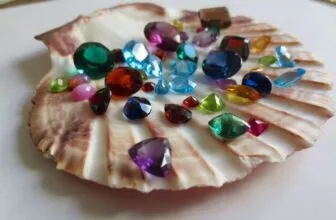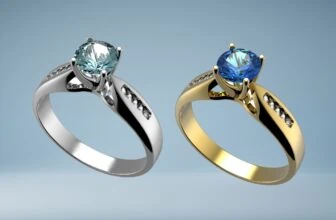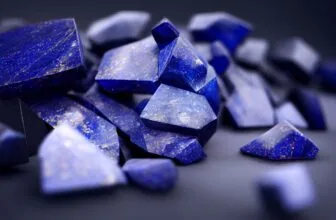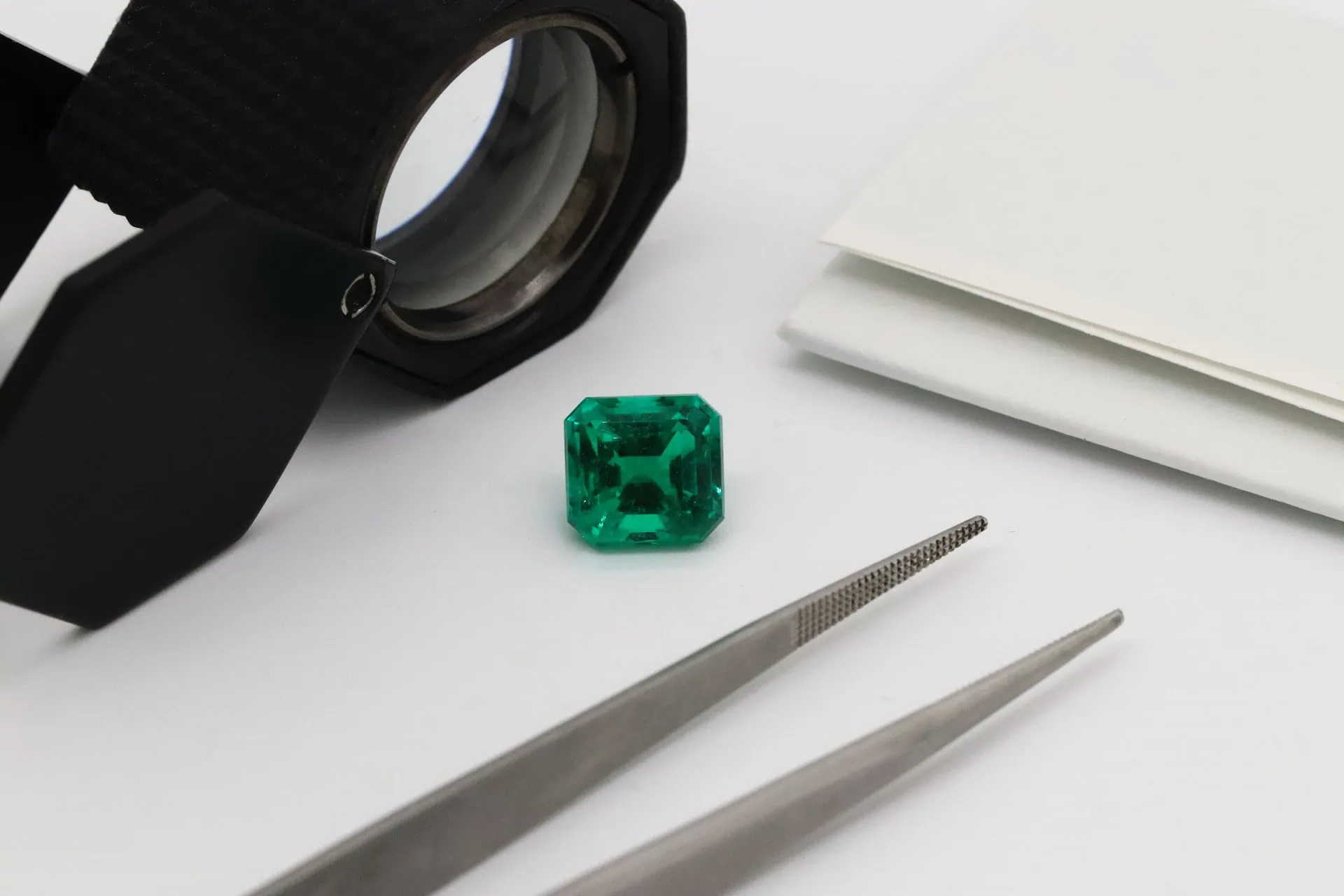
Table of Contents
With modern technologies evolving every year, lab-created gemstones such as diamonds and emeralds have become a genuine alternative to their natural counterparts. We’ve talked about lab-created diamonds before but let’s look at another popular gemstone – the emerald.
What’s the difference between a lab-created emerald and natural emeralds? Is it the same as the difference between lab-created and natural diamonds? Should you consider such a gemstone for your ring or jewelry piece or are lab-created emeralds just not as good as “the real thing”?
Natural Emeralds vs. Lab-created Emerald
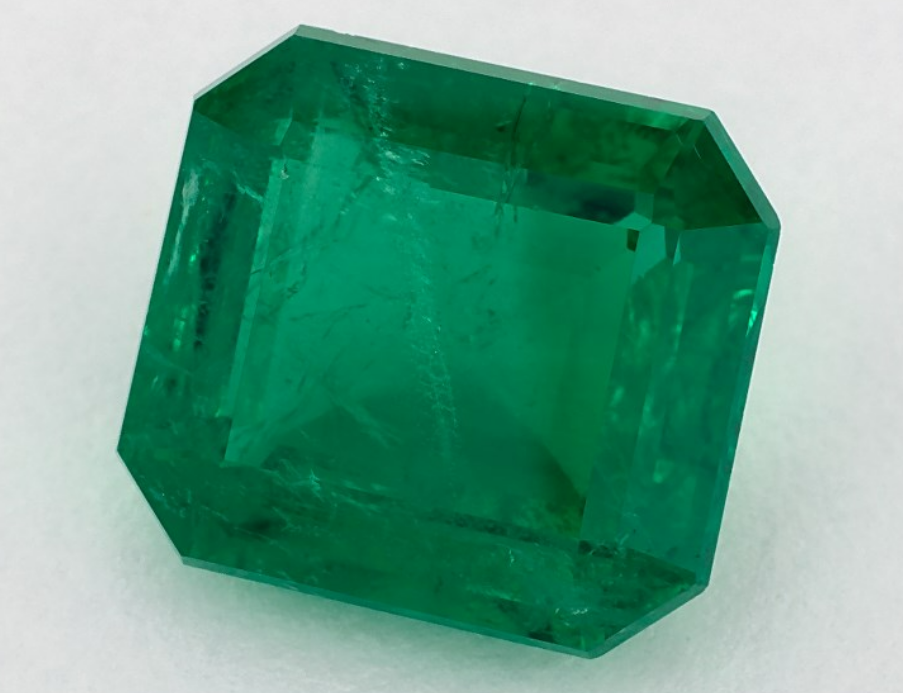
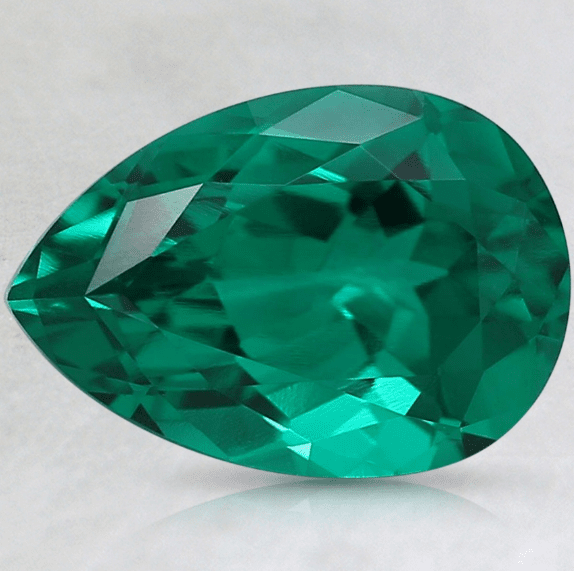
Natural emeralds – or natural beryl – are formed naturally when beryllium bubbles up from the Earth’s crust and into hydrothermal veins. There, the beryl mixes with other elements such as iron, vanadium, and chromium, which give it its color. We end up mining the beautiful bright-green emerald stones thousands of years later.
Lab-created emeralds, on the other hand, take much less time to form in carefully controlled laboratory settings. In essence, a natural yellow beryl seed gets suspended on a platinum wire into a solution of concentrated hydrochloric acid. The exact process can vary somewhat depending on the technology used, but we are typically talking about 40 to 60 days.
Despite these two drastically different “origins” of natural and lab-created emeralds, the two stones really are identical in any physical and chemical sense. They are made of the same compounds and have the same general appearance.
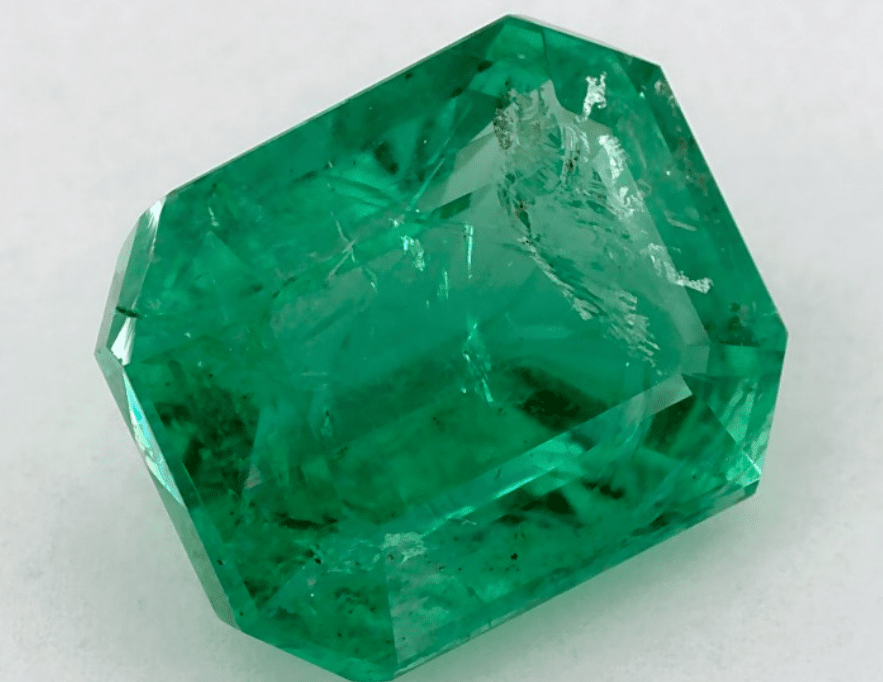
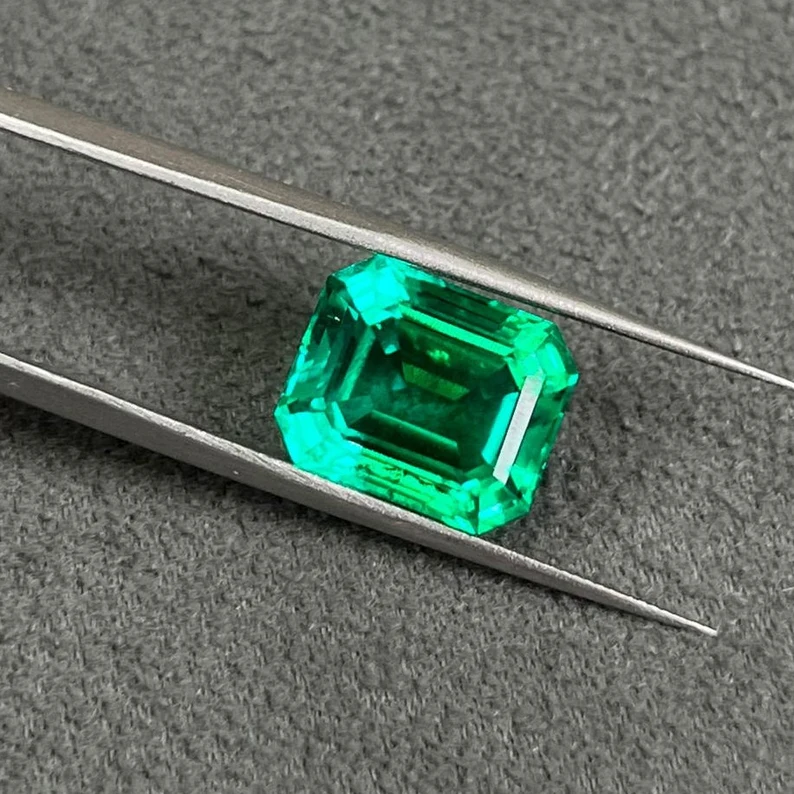
One of the defining features of natural emeralds is the many inclusions that can be found in them. In fact, it’s nearly impossible to find perfect clarity emeralds. These inclusions are called jardin (French for garden) to make them come across as appealing. However, synthetic emeralds don’t have these inclusions.
Because lab-created emeralds don’t grow in the Earth’s crust, they don’t have nearly as many physical inclusions and defects as natural emeralds. This can be seen as a positive for synthetic emeralds.
Having said that, it’s important to note that with emeralds, the beauty of the stone isn’t judged based on its clarity and brilliance. Sometimes, the imperfections found in natural emeralds add to the beauty of the stone and make it even more sought after.
How to Evaluate the Quality of an Emerald
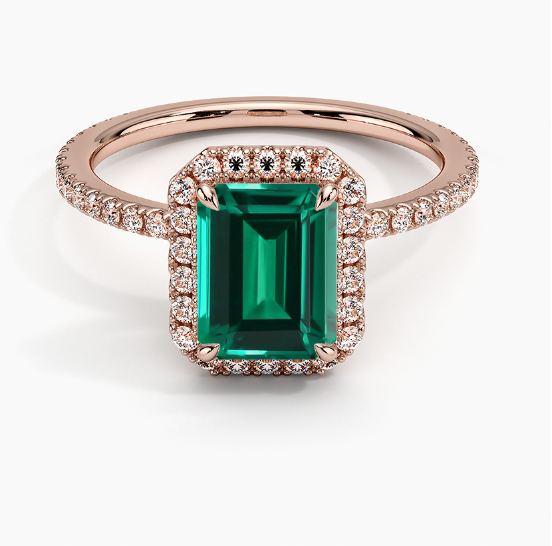
If clarity and brilliance aren’t what we use to judge emeralds, what are the qualities we look for in these colored stones? Well – the color.
Emeralds are fairly uniform in their hardness, ranking at 7.5 to 8 on the Mohs scale, so they’re significantly softer than diamonds. But what they differ in are their color and saturation. Both natural and lab-created emeralds can range anywhere between light and pale green and deep and rich dark green.
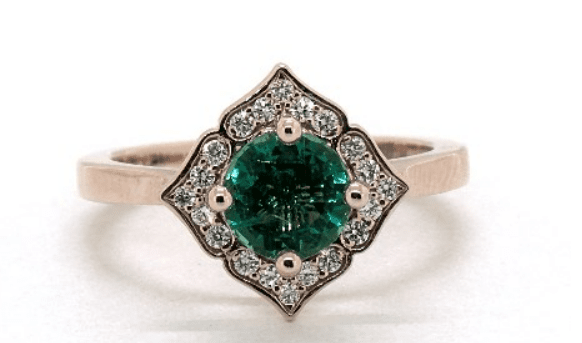
Ultimately, the choice of which emerald looks “better” is left to the buyer – if you like the look of a light green emerald on your white gold ring, that’s great. Most people do prefer the more rich and more saturated colored emeralds, and these are also the more expensive versions.
What’s more, as we’ve already mentioned, the same inclusions and “defects” that so drastically lower the value of natural colorless diamonds, in emeralds, are often seen as either neutral or even positive characteristics as they add to the “character” and unique look of each stone.
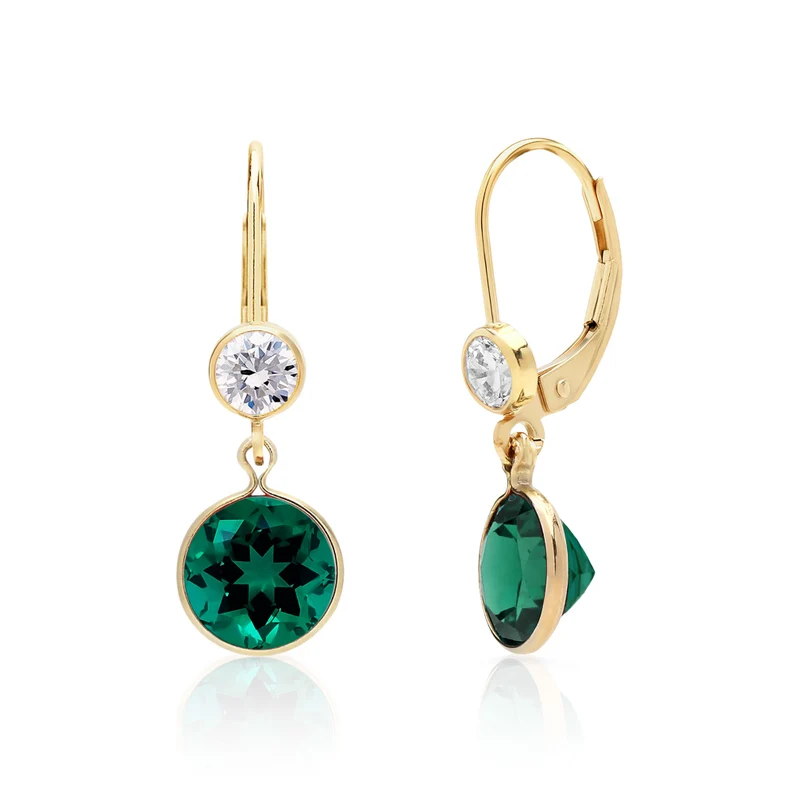
This leads many people to dislike the look of lab-created emeralds as they lack such inclusions and can seem duller and more uninteresting compared to their natural counterparts.
Of course, as with lab-created diamonds and other man-made gemstones, lab-created emeralds cost significantly less than natural emeralds. Regardless of looks and physical qualities, this is merely a result of their lower production costs.
Even though creating lab-made emeralds is a time-consuming and energy-intensive process, it’s a tiny fraction of the costs of mining and processing natural emeralds.
Lab-created Emerald vs. Natural Emeralds – Which Is Better?
Ultimately, that is up to the buyer to decide – if a certain lab-created emerald looks great to you compared to its natural counterpart, there’s nothing to say that you should go for the natural stone.
The fact that man-made emeralds are more affordable is also a huge argument in their favor as the lower cost allows you to save money which you could allocate to buying a bigger gemstone or better jewelry piece for the same cost.
The ethical considerations are also there to be made – while the emerald mining industry isn’t mired in nearly as much controversy as the diamond industry with its “blood diamonds”, emerald mining isn’t always “conflict-free” either. Lab-created diamonds are categorically conflict-free, however, as well as much more environmentally friendly as their production isn’t as energy-intensive.
So, if you have ethical concerns as well as budgetary considerations, a lab-created emerald is definitely something to consider.
If money isn’t as much of an issue, you are confident the natural emeralds you’re buying are ethically sourced, and if you value the inherent authenticity of natural emeralds, then choose a natural stone.
Where Can I Buy Lab Created Emeralds?
High-quality lab-created emeralds are more difficult to find than natural emeralds. That’s both because emeralds as a whole are not as popular as diamonds and because lab-created emeralds are not as valued as natural emeralds or lab-created diamonds.
Still, emeralds are rising in popularity nowadays for all types of jewelry, including wedding and engagement rings. And, with natural emeralds being quite rare and expensive, lab-created emeralds are emerging as a great alternative.
So, if you have the time to do a bit of digging for the right stone, you can find lab-created emeralds in quite a few places online.
We recommend the following retailers:
1. James Allen
An online giant in the diamond space, James Allen also offers a stunning collection of high-quality emeralds. The images and videos are unparalleled in quality and make shopping online similar, if not better, to shopping in-store.
2. Brilliant Earth
Known for its ethical standpoint on jewelry, Brilliant Earth offers an excellent range of both loose synthetic emeralds as well as already-set jewelry. You can also find natural emeralds here. Their settings are exquisite and you know you’re purchasing high-quality synthetic emeralds when you choose to buy from Brilliant Earth.
3. Etsy
For vintage, artisan, antique, and unique pieces, check out Etsy’s wide range of natural and synthetic emeralds. However, as the quality of the pieces varies depending on the retailer, check the customer reviews, after-sales policies, and the quality of each piece prior to purchasing. Always ask any questions you have about the piece prior to purchase – most Etsy sellers prioritize customer satisfaction and take the time to answer your questions. We’ve written a guide on how to buy from Etsy if you’re not quite sure how to go about it.
Wrapping Up
With synthetic gemstone technologies getting better and better every year, the choice between natural and lab-created precious stones keeps getting harder. With some stones such as diamonds, the choice is clear – lab-created for the quality, ethics, and price, natural for the prestige. With colored gems such as emeralds, however, the choice is trickier, as natural stones often do look better.
Our one tip to hopefully make things simpler is to look at every gemstone individually, whether it’s natural or lab-created. Yes, natural emeralds feel more “authentic” and often do look better but lab-created emeralds are just as real in every physical sense of the word, they are more affordable, and more ethically sourced, and many of them are just as stunning as their natural counterparts.


